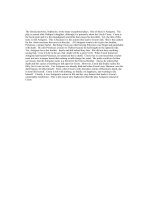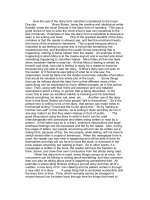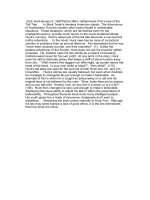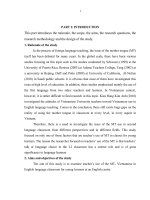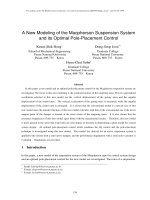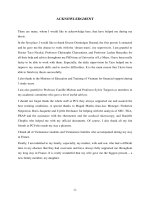Use of the words heshe himher and hishers etc
Bạn đang xem bản rút gọn của tài liệu. Xem và tải ngay bản đầy đủ của tài liệu tại đây (10.63 KB, 1 trang )
Use of the words he/she, him/her and his/hers etc.
Read the following sentences.
He has a camera. The camera belongs to him. It is his camera. The camera is his.
She has a diamond ring. The diamond ring belongs to her. It is her diamond ring. The diamond ring is
hers.
They have a tea garden. The tea garden belongs to them. It is their tea garden. The tea garden is theirs.
The sentences given in each set express the same idea using different forms of the personal pronouns he, she
and they.
The main difference between nouns and pronouns is that nouns do not change their form except when forming
the possessive case.
Pronouns, on the other hand, have different forms.
The forms he, she and they are used when a pronoun is the subject of a sentence.
The forms him, her and them are used when a pronoun is the object of a sentence.
The forms his, her, hers, their and theirs are possessive in nature.
Possessives are of two kinds: possessive pronouns and possessive adjectives.
Possessive adjectives go before nouns. Possessive pronouns are used alone.
Note that the possessive pronoun and possessive adjective form of he is the same: his
Study the following sentences.
This is his cap. This cap is his.
This is her ring. This ring is hers. (NOT His ring is her.)
This is their car. This car is theirs. (NOT This car is their.)
Stay on top of your writing! Download our grammar guide from www.englishgrammar.org to stay up-to-date.
Powered by TCPDF (www.tcpdf.org)
